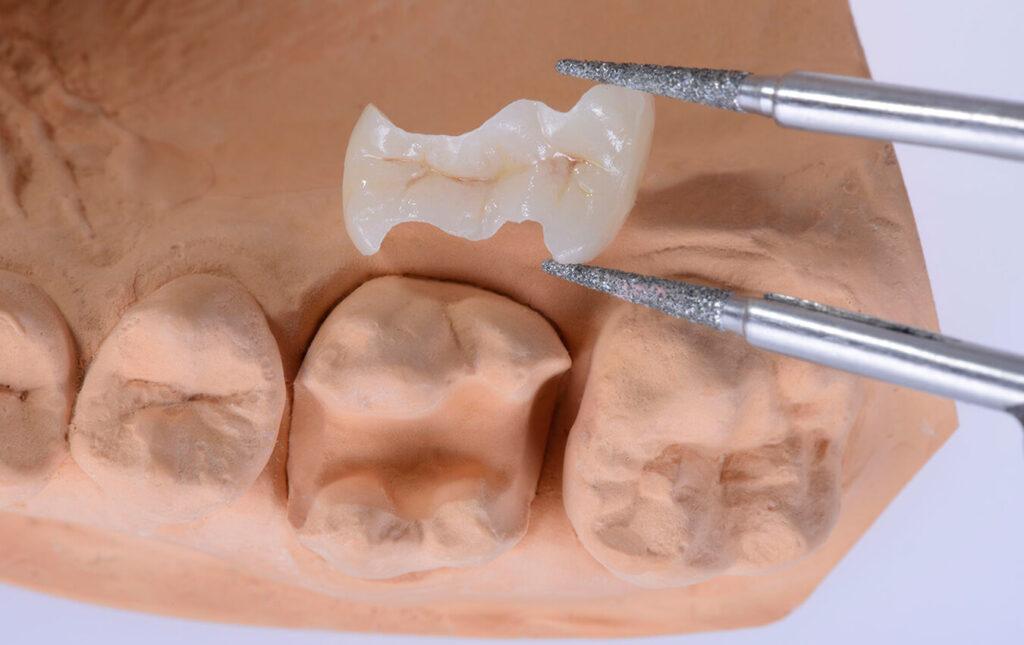
Inlays resemble fillings in function, which are they both serve to fill the space which remains after removing the decayed portion. The difference between them consists in the fact that the inlays are shaped outside the patient’s mouth and then cemented into the empty area. A wax pattern of that area is made which serves to cast a mold. An inlay is made from such a mold and it is implemented into the tooth by using dental cement.
Advantages of inlays refer to a greater duration than amalgam fillings, despite the short process of preparing the tooth. In the past, inlays used to be made of gold in order to provide durability. Nowadays, alloys of palladium, nickel, or chromium are usually applied, and sometimes tooth-colored materials and porcelain are used for a more natural smile. This allows dentists to safely link inlays to the tooth surface, thus adding structural integrity and preventing bacteria from entering and forming cavities. It is necessary to mention the fact that inlays are only for the cases when the damage is at the surface and it does not affect the entire tooth or the root. It called an indirect filling, together with outlays, which differ in that they sit on the teeth and build up their shapes. Embedding inlays take several steps, like taking impressions, placing a temporary inlay, then replacing it by a permanent one, re-adjusting the inlay for assured quality.
Benefits
- They increase the strength of teeth
- A good alternative to crowns when teeth damage is moderate
- They do not change color in time
- •Excellent esthetic appearance
Who is this procedure for?
Those with average tooth damage.
Who should not consider this procedure?
Those persons who are allergic to anesthetics or their components
What happens before the procedure?
Before any work is done, the portion is cleaned and all traces of decay or damage are removed.
What happens during the procedure?
Inlay procedures follow two steps: during the first appointment, impressions of the tooth are taken in order to establish the color, length and shape of the final product. At the same time, a temporary inlay is placed. During the break between the two appointments, the impressions are worked on in a laboratory and a permanent inlay is made. At the second visit to the dentist, the temporary inlay is replaced by the permanent one.
What happens after the procedure?
Usually, after the inlay treatment, no sensitivity should be claimed. Dentists usually give advice on how to brush and floss the teeth for a given period

